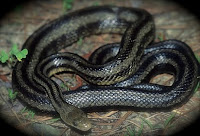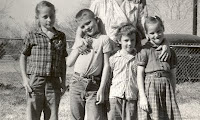
Like most people I meet, I’m not a big fan of serpents. But I have come to value them. After reading Barbara Kinsolver’s Prodigal Summer, I gained a new appreciation for predators of all sorts – coyotes, wolves, yellow-jackets, scorpions, spiders, and even snakes. The things these predators devour, such as rabbits, rats, mice, and ants, reproduce in great numbers. When the predators are eliminated, who reproduce in much smaller numbers, the prey multiplies. I’ve had more problems from rats and mice destroying property than I’ve ever had from snakes. And snakes eat rats.
As an urban dweller, these have not often been my concerns. But with the journey in to country living, I have had to think this through. So when I find the occasional scorpion on the floor I no longer squash it. (Scorpions, I have learned, have an unusually long life span – 7 to 15 years). I sweep it into a dustpan and toss it out the door. I do not indiscriminately destroy yellow-jacket nests – only when they are in a place where we are likely to alarm them, like over our doors. And, I have determined, that as much as possible, I will resist the post-Eden response of humans to kill snakes on sight and ask questions later.
That decision has been tested. In 2008 our family evacuated to the farm in Floresville at the approach of Hurricane Ike. As soon as the three of us arrived we each headed for one of the three bathrooms in the house. From the back of the house I heard my daughter’s voice.
“Daaaaaad, come here.” “What’s the problem?”
“There’s a snake in here.”
“Ok, I’m coming.” (Thinking a little grass snake was on the floor of the back bathroom.)
I made it to the back bathroom and looked around.
“Where is it?”
“In the toilet.”
“Ok.” (Thinking a little grass snake swimming around.)
I opened the lid to see a large (three foot or more) black snake coiled in the toilet bowl. He and I were about equally surprised. He quickly backed himself back into the plumbing system and out of sight.
My daughter got in the car and drove to the McDonald’s in town. We practiced “Flush. Look. Flush. Use. Look. Use. Flush.” all weekend with the nine of us assembled for the evacuation experience.
From September 2008 through June 2009 the practice continued. Protocol when you arrived at the farm house was to turn on the AC, turn on the hot water heater, and then to check the three toilets. We’d go into the bathroom like SWAT agents, opening the toilet lid and shouting “clear!” We never saw the snake again for nine months.
Then in June, Melinda and I were staying at the house with four of our friends while attending a conference in San Antonio. I arrived at the house first, on Father’s Day. I followed protocol. AC. Water heater. Toilet in the back bathroom. Clear. Toilet in the hall bathroom. Clear. Toilet in the master bathroom. Not so clear. There he was. The big black snake coiled up. And I was alone.
I got a good look at him. He wasn’t a poisonous snake. But, still, he was in my toilet bowl. I determined I needed to get him out before guests arrived. I really didn’t want him just slithering back into the pipes. I told him to wait there.
I had not thought this through ahead of time. What would I actually do if I found him? I scrounged around in the garage for some snake handling equipment. I decided on a work glove on my left hand (why not both hands? I don’t remember), a metal rod about three feet long, and a canvas book bag. I don’t really know what my plan was. I suppose I intended somehow to pick him up with the rod and put him in the canvas bag.
When I returned to the master bath, he was still there. I took the rod and began to try to get him out. It was like trying to pick up one piece of spaghetti with a single chopstick. As I was poking around, he was trying to get organized to make his escape back down the pipe. I manage to flop his tail out of the toilet bowl and then reached down with my gloved hand and grabbed him. Meanwhile he got his head down into the pipes and somehow hooked himself on the fixture. I could not pull him out. I was standing in the bathroom with a taut three to four foot black snake stuck in a toilet, trying to pull him out. I was afraid I’d pull him in half. Eventually, he won the match. He pulled out of my hand and took off down the drain.
“Clearly,” I thought, “I cannot tell our guests about this.” I did inform them about the snake sighting nine months earlier and encouraged them to practice the “Flush-Look-Use-Flush-Use-Flush” procedures just to be safe.
On Tuesday I saw him in the back yard, his shiny black skin reflecting in the sun, and I was able to study him more carefully. A Texas Rat Snake (see photo). A good snake when not in your toilet. They eat rats, mice, and other snakes. They can climb straight up a wall. My guess is that he climbed the oak next to the house, slithered across the roof (I’d actually seen a large snake skin on the roof once) and, seeking water and cooler temps in the 100 degree plus days of the South Texas drought, made his way down the vents into the toilet. Twenty-eight days of the month he had that cool porcelain bowl all to himself, his own little spa.
When I was at the farm last week, we found the bowls to be serpent-free. So Melinda and I climbed on the roof and put wire mesh in all the vent pipes to prevent further intrusions. If my vent-pipe theory is correct, this should do it.
In addition, Melinda discovered a two-foot rattlesnake while we were doing yard work. This time I had equipment and a plan. Resisting the temptation to chop it into pieces, I snared it with a device made of PVC and weed-eater line and carried it to the woods and released it. My “support your local predator” philosophy will be seriously challenged when the rattler is six feet long and as big around as my arm. But I haven’t seen that snake yet.



















